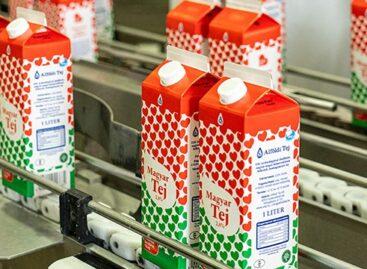The global food price index remained stable in October
The index of international food prices remained largely stable in October, after rising grain prices were offset by lower prices of other crops, the Food and Agriculture Organization of the United Nations (FAO) reported.

(Photo: PIxabay)
The FAO food price index, which tracks the price changes of the most important items in the international food basket, closed somewhat lower in October than in the previous month, and was thus 14.9% away from the historical peak of March 2022, but still 2%- exceeding the level of a year ago.
The cereal price index jumped 3% last month
Wheat prices rose 3.2%, mainly due to uncertainties surrounding the Black Sea Grain Agreement and lower US inventories. The international market price of grain products has risen by 3.5% since September, within which corn even exceeded this due to the poor production prospects in the US and the European Union, as well as the Argentine drought and Ukrainian export difficulties. The price of rice increased by 1%.
The price index of vegetable oils fell by 1.6% in October, 20% below the value of a year earlier
Despite rising international demand for sunflower oil, lower global market prices for palm, soybean and canola oil offset it. After the price of all dairy products fell, their global price index also shrank by 1.7%. Lower-than-expected demand from China, already ailing imports, and the weakening of the euro against the US dollar all contributed to this. The meat price index has fallen by 1.4% since September, after the prices of mutton, pork, beef and poultry also began to decrease thanks to depressed demand and expanding supply. The sugar price index closed 0.6% lower on the back of improved production prospects in India. An even greater decrease was prevented by heavy rains in Brazil that hampered the harvest, strong import demand from Indonesia and China, and higher bioethanol prices in Brazil.
More cautious predictions
According to the latest Grain Stocks and Demands Quick Report, global grain output will reach 2,764 million tons this year, which is, however, a 1.8% decrease compared to last year. Despite the expected historic peak in the case of wheat production (783.3 million tons), the output of grain crops (1,467 million tons) may decrease by up to 2.8%. Global rice production is estimated at 512.6 million tons, which is 2.4% below last year’s record. The amount of grain used in the 2022-2023 season will fall to 2,778 million tons, below last year’s level, but stocks may also fall by 2% to 841 million tons by the end of the season compared to their opening level.
Grain trade is expected to shrink by 2.2% in this period, reaching 469 million tons.
FAO
Related news
AM: One of Hungary’s greatest strategic assets is good-quality fertile soil
🎧 Hallgasd a cikket: Lejátszás Szünet Folytatás Leállítás Nyelv: Auto…
Read more >FAO: International food prices have been declining since September
🎧 Hallgasd a cikket: Lejátszás Szünet Folytatás Leállítás Nyelv: Auto…
Read more >Coca-Cola waiting to innovate in dairy
🎧 Hallgasd a cikket: Lejátszás Szünet Folytatás Leállítás Nyelv: Auto…
Read more >Related news
Crowds return to stores: margin cap and year-end preparations drive retail traffic
🎧 Hallgasd a cikket: Lejátszás Szünet Folytatás Leállítás Nyelv: Auto…
Read more >The kings of the New Year’s Eve list: hot dogs and champagne in abundance
🎧 Hallgasd a cikket: Lejátszás Szünet Folytatás Leállítás Nyelv: Auto…
Read more >The Alföldi Tej case is drifting towards an uncertain outcome
🎧 Hallgasd a cikket: Lejátszás Szünet Folytatás Leállítás Nyelv: Auto…
Read more >






